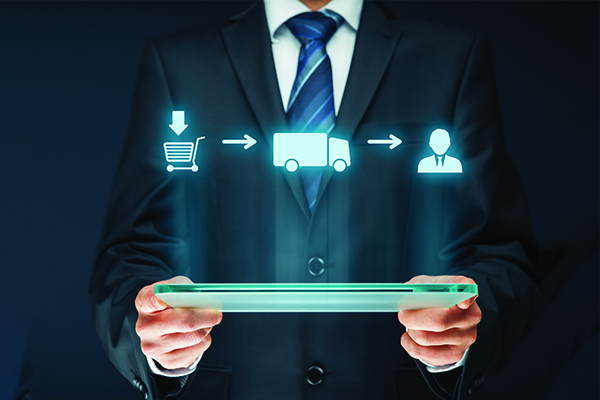Sorry, but your login has failed. Please recheck your login information and resubmit. If your subscription has expired, renew here.
September-October 2018
If it’s September, it must be time for Gartner’sTop 25 supply chains, the lead article in this issue of Supply Chain Management Review. As I was reading this year’s contribution from Gartner, I was struck by the number of the Top 25 that have launched NextGen Supply Chain initiatives, using Big Data, artificial intelligence (AI), robotic process automation (RPA), machine learning and the like to digitize their supply chains. It made me wonder: Is the rest of the pack falling behind or are they ready to follow the leaders? Browse this issue archive.Need Help? Contact customer service 847-559-7581 More options
For several decades now, new technologies have been grafted onto the supply chain with varying degrees of success. Sure, some have had enormous impact. Just try to run any aspect of a supply chain without a computer today or to track inventory without the simple barcode. Others have failed to deliver on their promise. Remember when Walmart crowned radio frequency identification king?
Today, a new crop of NextGen technologies is sprouting across the supply chain. Artificial intelligence (AI), robots, blockchain, the physical Internet and the connected supply chain are part of the discussion. As with their predecessors, they too promise increased efficiency, visibility and speed. But no technology, no matter how advanced, exists without people. At least not yet. So, there’s also the matter of how people will collaborate with these new tools.
It’s also worth noting that none of these technologies is fully baked. Like those before them, tomorrow’s NextGen technologies will evolve in three stages.
The first is the “what’s possible” stage. That’s where most of what’s discussed in this article stands today. Next is the “probable use” stage. The third is the “prevalent use” stage. Those two are where many think the technologies discussed here are headed, but we aren’t there yet. It’s always worked that way in the past, despite our impatience to know the answers today. Now is no different.

This complete article is available to subscribers only.
Log in now for full access or start your PLUS+ subscription for instant access.
SC
MR
Sorry, but your login has failed. Please recheck your login information and resubmit. If your subscription has expired, renew here.
September-October 2018
If it’s September, it must be time for Gartner’sTop 25 supply chains, the lead article in this issue of Supply Chain Management Review. As I was reading this year’s contribution from Gartner, I was struck by the… Browse this issue archive. Access your online digital edition. Download a PDF file of the September-October 2018 issue.For several decades now, new technologies have been grafted onto the supply chain with varying degrees of success. Sure, some have had enormous impact. Just try to run any aspect of a supply chain without a computer today or to track inventory without the simple barcode. Others have failed to deliver on their promise. Remember when Walmart crowned radio frequency identification king?
Today, a new crop of NextGen technologies is sprouting across the supply chain. Artificial intelligence (AI), robots, blockchain, the physical Internet and the connected supply chain are part of the discussion. As with their predecessors, they too promise increased efficiency, visibility and speed. But no technology, no matter how advanced, exists without people. At least not yet. So, there's also the matter of how people will collaborate with these new tools.
It's also worth noting that none of these technologies is fully baked. Like those before them, tomorrow's NextGen technologies will evolve in three stages.
The first is the “what's possible” stage. That's where most of what's discussed in this article stands today. Next is the “probable use” stage. The third is the “prevalent use” stage. Those two are where many think the technologies discussed here are headed, but we aren't there yet. It's always worked that way in the past, despite our impatience to know the answers today. Now is no different.
SC
MR


Latest Supply Chain News
- How CPG brands can deliver on supplier diversity promises
- How S&OP provides the answer to in-demand products
- AI, virtual reality is bringing experiential learning into the modern age
- Humanoid robots’ place in an intralogistics smart robot strategy
- Tips for CIOs to overcome technology talent acquisition troubles
- More News
Latest Podcast

 Explore
Explore
Topics
Software & Technology News
- AI, virtual reality is bringing experiential learning into the modern age
- Humanoid robots’ place in an intralogistics smart robot strategy
- Tips for CIOs to overcome technology talent acquisition troubles
- Game on: Rethinking change management for the digital era
- Predicting stockouts: Enhancing FMCG resilience through data-driven insights
- Top Performers Investing in, Benefitting from AI
- More Software & Technology
Latest Software & Technology Resources

Subscribe

Supply Chain Management Review delivers the best industry content.

Editors’ Picks






